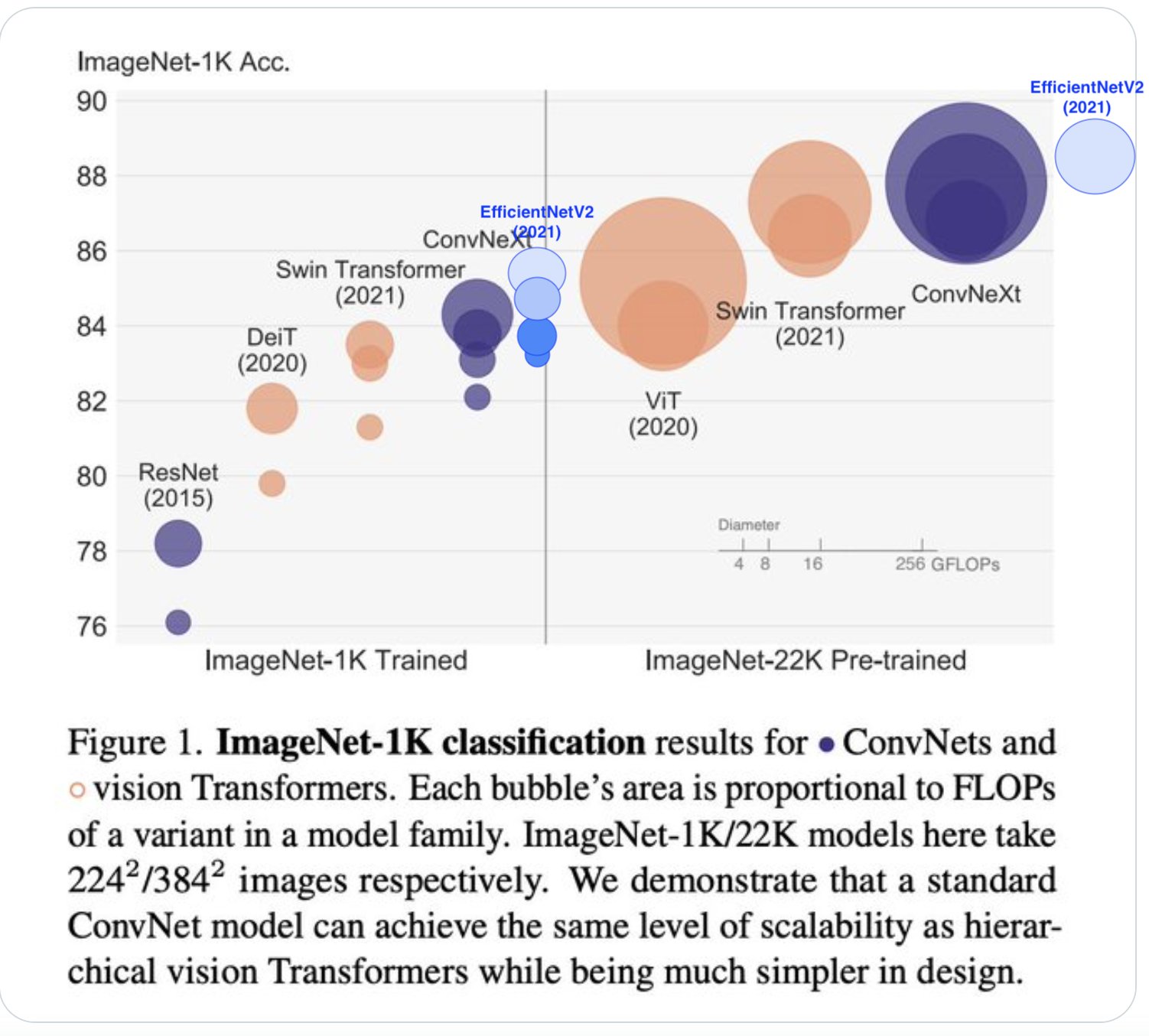Convolutional Neural Network (CNN, ResNet)
Variable image size -> use global pooling:
- Option 1:
GlobalPool2d->Linear(num_features, num_classes)(less computation) - Option 2:
Conv2d(num_features, num_classes, 3, padding=1)->GlobalPool2d
Note in Pytorch. global pooling is done by
AdaptiveAvgPool2d
Separable convolution (less computation)
| MobileNet style | Xception style |
|---|---|
 |
 |
Sota CNNs
| Description | Paper | |
|---|---|---|
| Inception v3 | Dec 2015 | |
| Resnet | After 2 convs (3x3->3x3) sum block input | Dec 2015 |
| SqueezeNet | Feb 2016 | |
| Densenet | Concatenate previous layers | Aug 2016 |
| Xception | Depthwise Separable Convolutions | Oct 2016 |
| ResNext | Nov 2016 | |
| DPN | Dual Path Network | Jul 2017 |
| SENet | Squeeze and Excitation (channels weights) | Sep 2017 |
| EfficientNet | Rethinking Model Scaling | May 2019 |
| Noisy Student | Self-training | Nov 2019 |
| NFNet | Normalization Free Convnets | Feb 2021 |
| EfficientNetV2 | Smaller Models and Faster Training | Apr 2021 |
| ResNet strikes back | An improved training procedure in timm | Oct 2021 |
| ConvNeXt | A ConvNet for the 2020s | Jan 2022 |


Check TIMM bencmark results
Code of the Interactive google colab:
! pip install pandas duckdb plotly
! git clone https://github.com/rwightman/pytorch-image-models.git
%cd pytorch-image-models/results
import pandas as pd
import plotly.express as px
import duckdb
db = duckdb.connect()
data = db.execute("""
SELECT *
FROM 'model_benchmark_amp_nhwc_rtx3090.csv' b
JOIN 'results-imagenet-real.csv' r
ON b.model = r.model
WHERE b.infer_batch_size = 256;
""").fetch_df()
data['family'] = data.model.map(lambda name: sorted(name.split('_'), key=len)[-1])
px.scatter(
# data,
data[data.infer_step_time < 250],
x='infer_step_time',
y='top1',
color='family',
size='param_count',
width=1200,
height=1000,
hover_name='model',
hover_data=['infer_samples_per_sec', 'infer_img_size']
)